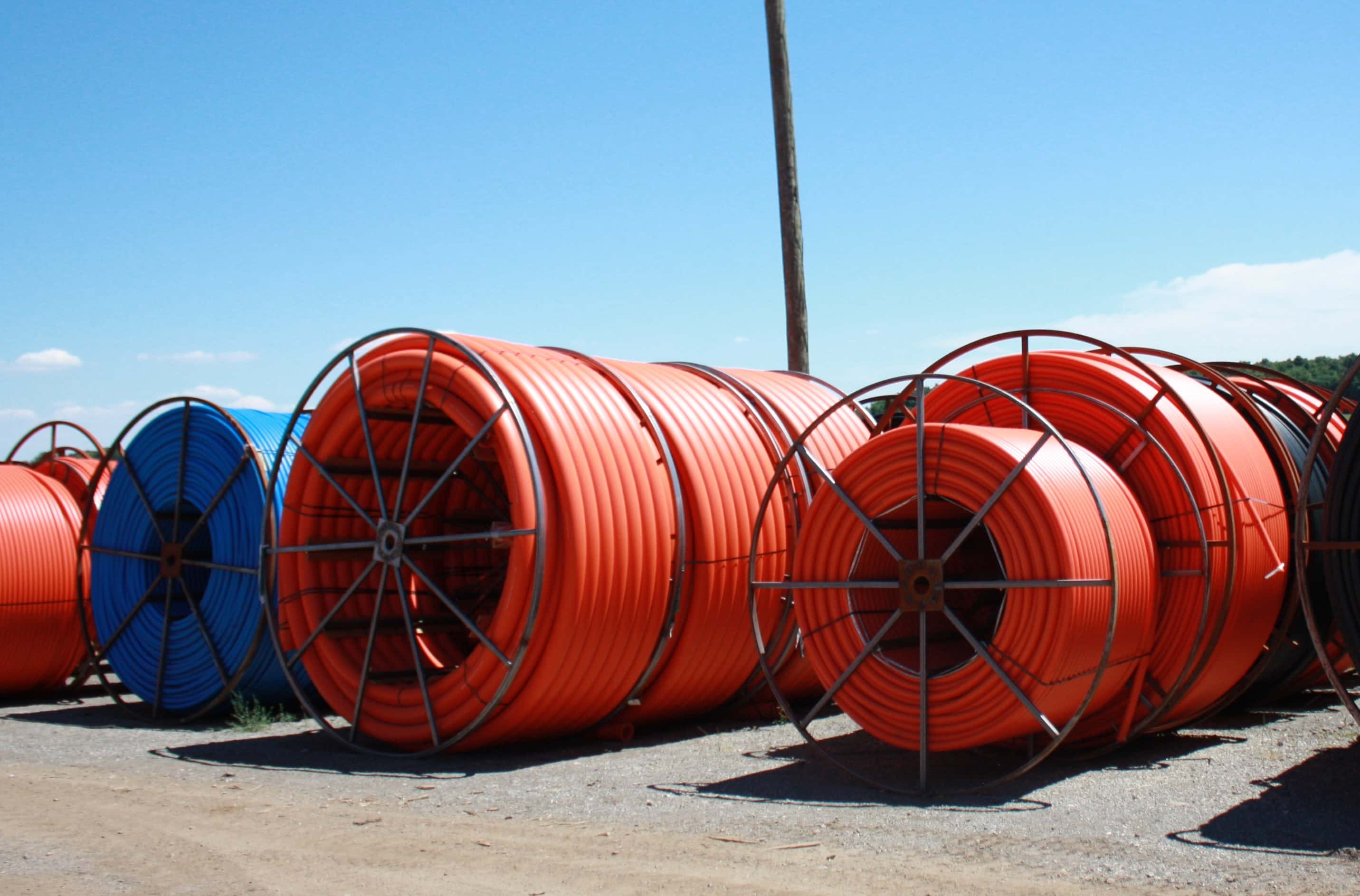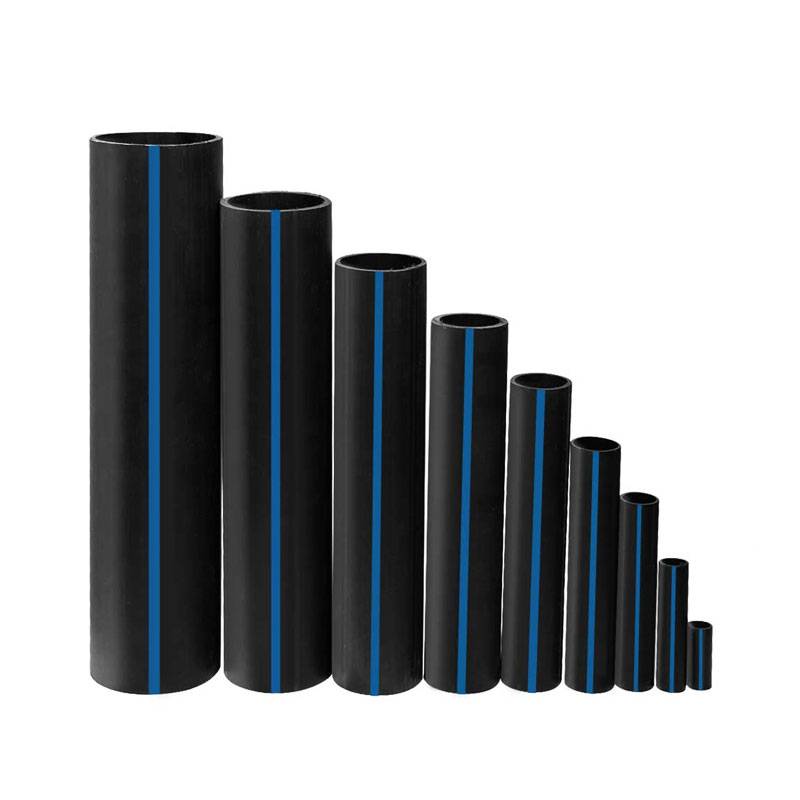Discover the Manufacturing Process Behind High-Quality HDPE Pipeline and Its Applications
The manufacturing procedure of high-grade HDPE pipes is elaborate and systematic. It starts with the option of resources that improve efficiency. Following this, ethylene undergoes polymerization to create material, which is after that formed through extrusion. Quality control is extremely important, making certain that the final item fulfills rigorous requirements. Nonetheless, the trip of HDPE pipes does not finish with manufacturing. Their applications throughout different markets reveal a more comprehensive significance worth checking out.
Comprehending HDPE: Qualities and Advantages

High-density polyethylene (HDPE) is a versatile polycarbonate understood for its longevity and resistance to numerous environmental aspects. This material exhibits outstanding tensile stamina, making it suitable for demanding applications. Its low-density framework adds to a lightweight product, assisting in simplicity of managing and installment. HDPE also showcases remarkable resistance to chemicals, which decreases deterioration when revealed to severe substances.
The product's low wetness absorption additionally improves its longevity, making it ideal for use in pipelines and tank. In addition, HDPE is immune to ultraviolet (UV) radiation, making certain that products maintain their stability also when exposed to sunshine. Its adaptability allows for the development of detailed shapes without jeopardizing toughness. The green nature of HDPE, commonly stemmed from recycled materials, adds to its charm, advertising sustainable methods in production. On the whole, these buildings and advantages make HDPE a favored selection for numerous commercial and customer applications.
Basic Material Choice for HDPE Manufacturing
The choice of resources for HDPE manufacturing is necessary to validate the end product fulfills the desired specs and quality requirements. High-density polyethylene (HDPE) is largely produced from polymerized ethylene, obtained from nonrenewable fuel sources such as gas or crude oil. The top quality of these feedstocks considerably influences the mechanical and thermal homes of the last HDPE.
Additives additionally play a substantial role in improving HDPE's performance, including antioxidants, UV stabilizers, and colorants, which improve durability and resistance to environmental variables. The option process have to think about not only the chemical composition of the raw materials but likewise their processing qualities to assure efficient manufacturing.
The sourcing of raw materials must focus on sustainability and compliance with environmental policies, as accountable techniques are imperative in today's market. Inevitably, careful resources selection lays the structure for generating premium HDPE pipes ideal for varied applications.
The Extrusion Process: Shaping HDPE Pipeline
The extrusion procedure plays a crucial function in shaping HDPE pipelines, beginning with meticulous material preparation strategies that ensure excellent circulation and uniformity. Equally vital is the style of the die, which directly affects the final measurements and surface area high quality of the pipe. With each other, these aspects add greatly to the effectiveness and top quality of HDPE pipe production.
Product Preparation Strategies
Efficient manufacturing of HDPE pipelines starts with precise product preparation methods, especially the extrusion procedure. Throughout this phase, high-density polyethylene resin is initial dried to get rid of wetness, making certain ideal flow features. The material is after that fed right into the extruder, where it undergoes heating and melting, changing into a viscous state. This heating process is carefully managed to preserve the product's stability and performance. The liquified HDPE is compelled through a die, forming it into a constant pipeline kind. Correct temperature level monitoring throughout extrusion is necessary, as it straight influences the material's buildings and the final item top quality. As soon as formed, the HDPE pipeline is cooled down and reduced to defined lengths, all set for succeeding handling and applications.
Die Layout Relevance
Precision in die design plays a necessary duty in the extrusion procedure of HDPE pipelines. The die works as the last shaping device, directly affecting the pipeline's dimensions, wall density, and surface area coating. A properly designed die guarantees consistent material circulation, lowering problems such as irregularities and weak points. The geometry of click here to find out more the die have to be maximized to suit the certain properties of HDPE, including its thickness and thermal actions throughout extrusion. In addition, the cooling price of the product as it travels through the die can considerably affect the pipeline's structural stability. As a result, spending in innovative die modern technology is essential for makers intending to generate high-grade HDPE pipes that meet market standards and consumer expectations.
High Quality Control Measures in HDPE Manufacturing
Numerous factors influence the top quality of HDPE pipeline production, reliable quality control procedures are critical to ensure uniformity and integrity in the last item (hdpe pipe fittings Midland TX). Secret quality assurance practices include extensive material examination, confirming that the raw polyethylene meets well established standards for pureness and thickness. Throughout the extrusion procedure, specifications such as temperature level, stress, and cooling time are very closely kept track of to keep dimensional accuracy and architectural integrity
Additionally, post-production screening is vital; manufacturers frequently carry out hydrostatic examinations to examine the pipeline's stamina and resistance to pressure. Visual assessments for surface problems better enhance quality guarantee. Certification from appropriate requirements organizations, like ASTM or ISO, offers an additional layer of integrity. By implementing these comprehensive high quality control steps, suppliers can minimize defects, boost efficiency, and guarantee that the HDPE pipelines fulfill the certain requirements of numerous applications, ultimately resulting in customer complete satisfaction and trust in the product.
Applications of HDPE Pipe Throughout Industries
HDPE pipes are utilized throughout various fields because of their toughness and convenience. In water distribution systems, they guarantee reliable shipment, while in wastewater monitoring, they supply dependable solutions for waste transport. Furthermore, agricultural watering networks profit from HDPE's resistance to rust and adaptability, making it an optimal option for contemporary farming techniques.

Water Distribution Equipments
A significant variety of markets depend on high-density polyethylene (HDPE) pipelines for efficient water circulation systems. Understood for their sturdiness and resistance to deterioration, HDPE pipes are widely used in municipal water supply networks, farming irrigation, and commercial applications. Their lightweight nature promotes easy handling and setup, decreasing labor prices and time. Furthermore, HDPE pipelines can fit numerous pressure levels, making them appropriate for both low and high-pressure systems. American Plastics HDPE Pipe Manufacturing. The versatility of the product allows for seamless combination into existing facilities, minimizing the requirement for considerable excavation. Additionally, HDPE's resistance to chemical seeping warranties that the water delivered remains safe and tidy, making it a perfect option for keeping the high quality of potable water across different markets
Wastewater Administration Solutions
Reliable water circulation systems likewise lead the means for ingenious wastewater management remedies, where high-density polyethylene (HDPE) pipes play a considerable role. Popular for their toughness and resistance to corrosion, HDPE pipes are suitable for carrying wastewater in different setups. Their versatility permits simple installment in intricate settings, reducing the requirement for weblink comprehensive excavation. Furthermore, HDPE's smooth interior surface area decreases rubbing, boosting circulation rates and performance. These pipelines are also resistant to chemical leaching, guaranteeing that impurities do not compromise the surrounding atmosphere. Industries, towns, and treatment centers significantly count on HDPE pipelines for their reliability and long life, making them a preferred choice for modern wastewater administration systems. This adaptability highlights the essential significance of HDPE pipes across various applications.
Agricultural Watering Networks
Agricultural watering networks profit significantly from the usage of high-density polyethylene (HDPE) pipelines, which provide efficient and reputable water delivery to plants. HDPE pipelines are light-weight, making them very easy to transfer and mount, while their adaptability permits different configurations in varied surfaces. These pipes show exceptional resistance to rust, chemicals, and UV radiation, making sure sturdiness in extreme farming settings. Furthermore, their smooth interior surface area decreases rubbing loss, enhancing water flow and reducing power prices connected with pumping. The durability of HDPE pipes, typically going beyond half a century, adds to lower upkeep and substitute expenses. Consequently, farmers significantly rely upon HDPE pipes to enhance irrigation performance and advertise sustainable agricultural practices, eventually leading to improved crop yields and source preservation.
Future Fads in HDPE Pipeline Technology
As the need for sustainable and reliable facilities grows, advancements in HDPE pipeline technology are positioned to change various sectors. Emerging fads consist of the combination of wise modern technologies, such as sensing units and IoT capabilities, which assist in real-time monitoring of pipeline problems, minimizing maintenance prices and stopping leakages. Furthermore, the growth why not look here of sophisticated manufacturing strategies, such as 3D printing, is enabling the manufacturing of facility, tailored pipe styles that satisfy particular project needs.
The focus on recycling and circular economy methods is driving the advancement of HDPE pipes made from recycled materials, boosting sustainability. Improved jointing approaches, such as electro-fusion and mechanical fittings, are also enhancing setup performance and reliability. The growing emphasis on environmental policies is pushing makers to embrace greener production processes, guaranteeing that HDPE pipes not only meet sector criteria however also cultivate an even more sustainable future for infrastructure growth.
Regularly Asked Inquiries
Exactly How Does HDPE Contrast to Other Plastic Products?
HDPE surpasses many various other plastic products regarding sturdiness, chemical resistance, and versatility. Its low thickness and high tensile stamina make it suitable for different applications, commonly exceeding alternatives in both efficiency and durability.
What Are the Environmental Influences of HDPE Manufacturing?
The environmental influences of HDPE manufacturing consist of greenhouse gas emissions, power usage, and potential pollution from producing processes. In addition, inappropriate disposal can lead to soil and water contamination, raising problems regarding long-term ecological impacts.
Can HDPE Pipeline Be Reused?
Yes, HDPE pipes can be recycled. Lots of facilities approve used HDPE for handling, changing it right into new items. This reusing adds to sustainability initiatives, minimizing plastic waste while preserving resources and energy in the production cycle.
What Is the Life-span of HDPE Piping?

How Do Temperature Level Variants Impact HDPE Pipeline Performance?
Temperature variants significantly impact HDPE pipeline performance, impacting flexibility and strength. High temperatures can cause softening, while reduced temperatures might create brittleness, eventually affecting the pipe's resilience and viability for numerous applications in diverse settings.